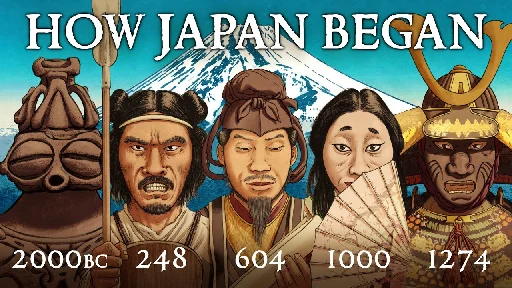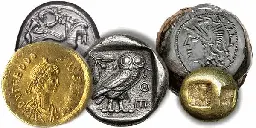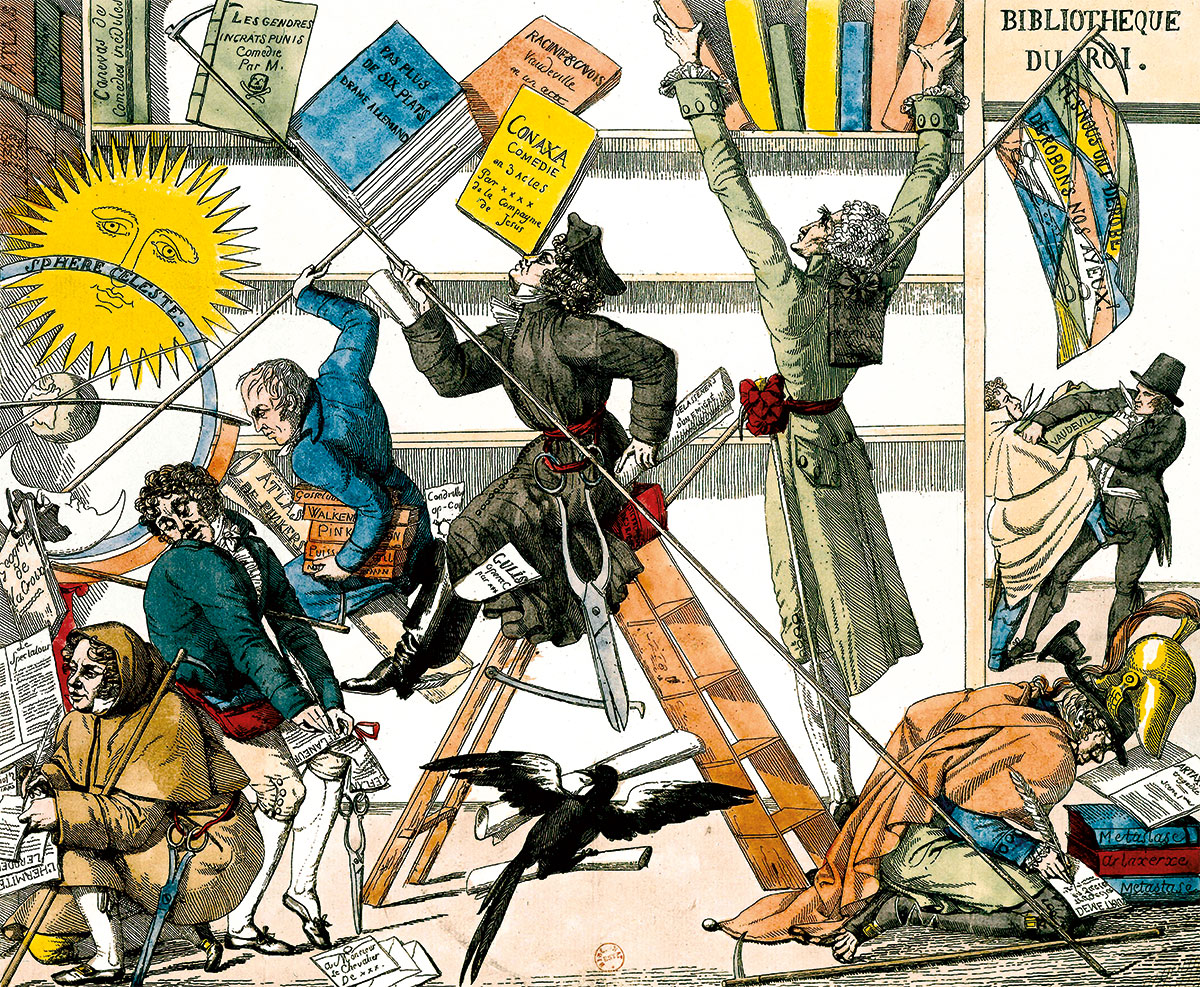
History
- Article: The Dominance of beef in American cuisine can be traced to settler colonialism. In America, this process centered on the systemic and often violent displacement of Native Americans CW: meattheconversation.com How beef became a marker of American identity
On July 4, 1891, Oklahoman farmer Oscar Weber Bilby served his neighbors the very first hamburgers on buns.

cross-posted from: https://hexbear.net/post/3776799
> >Beef is one of America’s most beloved foods. In fact, today’s average American eats three hamburgers per week. > > >American diets have long revolved around beef. On an 1861 trip to the United States, the English novelist Anthony Trollope marveled that Americans consumed twice as much beef as Englishmen. Through war, industry, development and settlement, America’s love of beef continued. In 2022, the U.S. as a whole consumed almost 30 billion pounds (13.6 billion kilograms) of it, or 21% of the world’s beef supply. > > >Beef has also reached iconic status in American culture. As “Slaughterhouse-Five” author Kurt Vonnegut once penned, “Being American is to eat a lot of beef, and boy, we’ve got a lot more beef steak than any other country, and that’s why you ought to be glad you’re an American.” > > >In part, the dominance of beef in American cuisine can be traced to settler colonialism, a form of colonization in which settlers claim – and then transform – lands inhabited by Indigenous people. In America, this process centered on the systemic and often violent displacement of Native Americans. Settlers brought with them new cultural norms, including beef-heavy diets that required massive swaths of land for grazing cattle. > > >As a food historian, I am interested in how, in the 19th century, the beef industry both propelled and benefited from colonialism, and how these intertwined forces continue to affect our diets, culture and environment today. > > full article
- Victorian ghost photographs amused viewers with spooky thrillstheconversation.com Victorian ghost photographs amused viewers with spooky thrills
In the mid-19th century, photographs with ghostlike figures became collectible amusements thanks to the invention of the stereoscope – a device that created three-dimensional optical illusions.
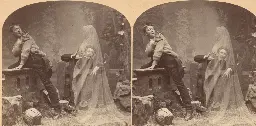
October has long been associated with ghosts – from ancient Celtic festivals to ward off restless spirits after harvest time to the modern standby of using an old sheet to make a last-minute Halloween costume. In the middle of the 19th century, however, popular portrayals of ghosts became a year-round staple, in part because photographers discovered that they could depict them.
The first ghost photographs were accidents. Early cameras required 30 seconds or more to take a photo. If someone wandered briefly into the shot, the resulting picture would contain their ghostly trace superimposed over substantial furniture, buildings or people who had held still for the full exposure.
When shrewd photographers realized that the inconvenience of long exposure time could become an asset, detailed directions for creating these illusions proliferated. Photographers could cut ghost figures from transparent material and place them onto glass negatives or inside camera bodies. Or they could make real people half-transparent through tricks of double exposure.
- Christopher Columbus' remains found as DNA analysis ends mysterywww.the-express.com Christopher Columbus' remains found as DNA analysis ends mystery
Scientists have confirmed that the remains of the legendary explorer Christopher Columbus have been found after 500 years.

- John Mearsheimer Explains Vietnam and Americam.youtube.com - YouTube
Enjoy the videos and music you love, upload original content, and share it all with friends, family, and the world on YouTube.

- Empresa de China, Spanish plan for conquering China circa 1588

cross-posted from: https://hexbear.net/post/3615203
> >The Empresa de China ("China enterprise") was a long-time projected conquest of China by the Spanish Empire. Proposed repeatedly through the 16th century as a natural culmination of the conquest of the Philippines, it involved the invasion and assimilation of the Ming dynasty by a coalition that would include Spaniards, Portuguese, Filipinos and Japanese from the Toyotomi regency, as well as potential masses of Chinese allies. > > >Military conquest of China appeared viable by the reports of Christian missionaries and ambassadors, who described the Ming population as demobilized, inefficiently administered and easy to sublevate against their own governors, offering a situation similar to those of the Aztec and Inca empires where control of the territory could be wrested away. Once conquered, the plan included mass evangelizing activities and the promotion of mestizaje between Iberians and Chinese, hoping to turn China into a source of strength to extend Hispanic control and Christianity across all of Asia. In a best case scenario, the Spanish Empire could aspire to form an oriental theater in the Ottoman–Habsburg wars. > > >The enterprise was formulated by several figures of the Hispanic Monarchy, but its main driving force would be a sector of the Society of Jesus led by Alonzo Sánchez, who clashed against other churchmen over the Vitorian legitimacy of a new conquest. King Philip II allowed in 1588 the founding of an official council, the Junta de la Empresa de China, but the failure of the Spanish Armada the same year caused the project to be abandoned. The invasion of China briefly resurfaced later, with a new project to topple the Toyotomi regency and conquer Japan with the help of its own native uprising, potentially including Tokugawa Ieyasu, after which the Japanese armies would be used against China. > > "Dude just conquer the Ming dynasty and half of Asia so you can open a new front against the ottomans"
- The Kurds Who Died for Palestinenewlinesmag.com The Kurds Who Died for Palestine
The remarkable story of the ‘Beaufort Castle Heroes,’ who had been training at a Palestinian base in Lebanon when they were captured in 1982

cross-posted from: https://hexbear.net/post/3601667
> >The Kurdistan Workers’ Party (PKK) is arguably one of the most important non-state actors in modern West Asia. While fighting a brutal guerrilla war against the Turkish government, it has also managed to inspire Kurdish movements in Syria, Iraq and Iran, as well as Iran’s non-Kurdish protesters. In a region where many parties are nakedly sectarian, the PKK has gone from Marxist-Leninist nationalism to a form of radical-democratic “libertarian municipalism” inspired by the late anarchist thinker Murray Bookchin. > > >For better or worse, the PKK exists today only because the Democratic Front for the Liberation of Palestine (DFLP), a now-obscure Palestinian force, agreed to shelter some Kurdish exiles in the 1980s. That experience in the Palestinian camps permanently affected the worldview of the PKK’s founding generation. Not only did the PKK learn how to fight a guerrilla war, it also walked away with a strong sense of internationalism. > > >In fact, some of the PKK’s founding figures spent time in an Israeli detention camp as prisoners of war. Old issues of the party magazine Serxwebun tell the remarkable story of the “Beaufort Castle Heroes,” a group of Kurds who had been training at a Palestinian base in Lebanon when they were captured by Israeli forces in June 1982. (Serxwebun means “independence” in Kurdish.) New Lines is reporting much of their story in English for the first time. > > >The June 1984 edition of Serxwebun features drawings and poetry from the prisoners, including one Iranian Kurdish fighter. The Iranian Kurd, codenamed Sami, recalled being beaten by an Israeli interrogator who shouted, “You came to kill Jews, you’re lying … Kurdistan, Turkistan, Bangladesh, Iran, Arab, you are all antisemitic, we will kill you all.” > > >The PKK was just one of many foreign fighter contingents in Lebanon. (Sami was captured alongside a Bangladeshi fighter, and another Serxwebun article mentioned the presence of an Iranian from the left-wing People’s Fedai Guerrillas.) At the time, the Palestinian movement was the international leftist cause celebre, and leftists understood it to be part of an unbroken chain of Third World liberation struggles. > > >“If you know Vietnam, you know Kurdistan … a new Vietnam in our hearts,” Sami wrote in a poem. “To the defenseless prisoner in Diyarbakir, to the leaf on the tree in Vietnam, to the living being in Hiroshima and Nagasaki, to the orphan baby in Sabra and Shatila.” > > Full Article > > Extra reading: PKK Internationalists in the Palestinian Resistance !kurdistan
- 'Postcards are the email of their day': How cat memes went viral 100 years agowww.bbc.com 'Postcards are the email of their day': How cat memes went viral 100 years ago
In the age of social media, we're living through a communications revolution. But this isn't the first one, nor is it the first time cats have been at the centre of social change.

- Over 30 years of Indigenous resistance with Mohawk land defender Ellen Gabriel : The Narwhalthenarwhal.ca 30 years of Indigenous resistance with Ellen Gabriel | The Narwhal
'Colonial-rooted poverty will not be solved by more colonial solutions.'

cross-posted from: https://hexbear.net/post/3556271
> >'Colonial-rooted poverty will not be solved by more colonial solutions' > > >Thirty-four years ago, Katsi’tsakwas Ellen Gabriel was thrust into the spotlight when she was chosen as the spokesperson for the Kanienʼkehá:ka (Mohawk) communities of Kanehsatà:ke and Kahnawà:ke, as they resisted the planned expansion of a golf course on into their sacred lands and burial grounds in southern Quebec and police and military attempted to subdue them by force. > > >“You do not call it the Oka Crisis,” Gabriel tells me, of the village near the golf course that media and Canadians generally use to refer to the confrontation. “Oka caused the crisis. It was Kanehsatà:ke and Kahnawà:ke that were under siege, and were attacked because of the municipality of Oka and the private corporations behind the project.” > > >In the decades since the 78-day standoff ended, Gabriel has remained a steadfast defender of Indigenous homelands and an advocate for Indigenous Rights and sovereignty, particularly the rights of women. She has spoken at the United Nations and addressed Parliament, and served for more than six years as president of the Quebec Native Women’s Association, drawing connections between the protection of Indigenous lands and the rights, dignity and future of Indigenous nations. > > >In a new book, When the Pine Needles Fall, Gabriel and settler historian Sean Carleton chart a course from the events of 1990 to the present, while extending into a generous and expansive vision of the future. The book, which they began writing in 2019, evolved during the pandemic, taking shape as a series of conversations that articulate the urgency and necessity of Indigenous resistance. Centring Gabriel’s own words through dialogue, Carleton writes, was a way to “divest my power and authority as an academic to create space for Ellen’s brilliance … to hold space and amplify Ellen’s voice, while also co-creating through conversation.” > > [Full article !kkkanada ](https://thenarwhal.ca/ellen-gabriel-indigenous-resistance/)
- Paper Trails with Anthony Maina | MBC | Hopes for the future of Mau Mau heritage in Kenyamuseumofbritishcolonialism.org Paper Trails - Anthony Maina | MBC
What would MBC be without Anthony Maina? Over many years Anthony has acquired a wealth of knowledge about Mau Mau […]

- Among the Moss Piglets: The First Image of a Tardigrade (1773)publicdomainreview.org Among the Moss Piglets: The First Image of a Tardigrade (1773)
The very first drawing of the microscopic "water bear" by a theologian turned microscope explorer.
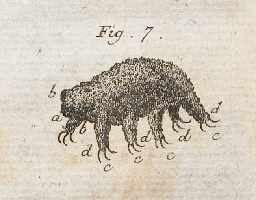
- The short history of global living conditions and why it matters that we know itourworldindata.org The short history of global living conditions and why it matters that we know it
Very few think the world is making progress. In this article I am looking at the data to challenge the widespread negative sentiments.

- America's Oldest Board Game Teaches 19th-Century Geographymymodernmet.com America's Oldest Board Game Teaches 19th-Century Geography
Travelers’ Tour Through the United States was published in 1822.

- Opinion | The Last Survivors of an Atomic Bomb Have a Story to Tellwww.nytimes.com Opinion | The Last Survivors of an Atomic Bomb Have a Story to Tell
On the anniversaries of the bombings of Hiroshima and Nagasaki, we must listen to the few who can still speak to the horror nuclear weapons can inflict.

- Who Took the Cocaine Out of Coca-Cola? - JSTOR Dailydaily.jstor.org Who Took the Cocaine Out of Coca-Cola? - JSTOR Daily
The medical profession saw nothing wrong with offering a cocaine-laced cola to white, middle-class consumers. Selling it to Black Americans was another matter.

- The curious history of chain letters.slate.com The curious history of chain letters.
On the occasion of the release of the horror film Chain Letter, in which "a maniac murders teens when they refuse to forward chain mail," Slate asked...

- The Singapore Stone’s carvings have been undeciphered for centuries – now we’re trying to crack the puzzletheconversation.com The Singapore Stone’s carvings have been undeciphered for centuries – now we’re trying to crack the puzzle
Despite its name, this sandstone slab is not a simple stone. It was once part of a monument, an ancient epigraph measuring three by three metres carrying about 50 lines of text.
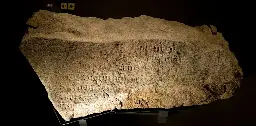
- Ancient DNA Illuminates the History of Malaria, One of the World's Deadliest Diseaseswww.smithsonianmag.com Ancient DNA Illuminates the History of Malaria, One of the World's Deadliest Diseases
Researchers extracted parasitic DNA from preserved teeth and bones, revealing how malaria spread across the globe in a new study

- Britain vs The United States: The Other Great Game (Full Documentary)

YouTube Video
Click to view this content.
- Deciphered Herculaneum papyrus reveals precise burial place of Platoarstechnica.com Deciphered Herculaneum papyrus reveals precise burial place of Plato
Various imaging methods comprised a kind of "bionic eye" to examine charred scroll.

- Western research reveals photos previously 'lost forever' - Western Newsnews.westernu.ca Western research reveals photos previously 'lost forever' - Western News
Researchers from Western University developed a technique to create images from old, badly tarnished daguerreotypes, the earliest photographs.
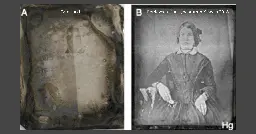
- A Spoonful of Sugar Helps the Radioactive Oatmeal Go Downwww.smithsonianmag.com A Spoonful of Sugar Helps the Radioactive Oatmeal Go Down
When MIT and Quaker Oats paired up to conduct experiments on unsuspecting young boys

- Histomap: Visualizing the 4,000 Year History of Global Powerwww.visualcapitalist.com Histomap: Visualizing the 4,000 Year History of Global Power
We examine the Histomap, an ambitious timeline that details the power of various civilizations going all the way back to 2,000 B.C

- Tales of the Catfish God: Earthquakes in Japanese Woodblock Prints (1855)publicdomainreview.org Tales of the Catfish God: Earthquakes in Japanese Woodblock Prints (1855)
A type of woodblock print known as *namazu-e*, these images involve a myth that earthquakes were caused by the movements of a great catfish.

- What Luddites can teach us about resisting an automated futurewww.technologyreview.com What Luddites can teach us about resisting an automated future
Opposing technology isn’t antithetical to progress.

- The Deep and Enduring History of Universal Basic Incomethereader.mitpress.mit.edu The Deep and Enduring History of Universal Basic Income
While the concept stretches back centuries, it has garnered significant attention in recent decades.

- Bad Money – Ancient Counterfeiters and Their Fake Coinscoinweek.com Bad Money - Ancient Counterfeiters and Their Fake Coins
CoinWeek Ancient Coin Series by Mike Markowitz .... Mundus vult decipi, ergo decipiatur "The world wants to be deceived, so let it be deceived." --
- Catherine Nicholson: "On Ramie Targoff's Shakespeare’s Sisters"yalereview.org Catherine Nicholson: "On Ramie Targoff's Shakespeare’s Sisters"
A new book celebrates—and sells short—Shakespeare's sisters.

- Oppenheimer feared nuclear annihilation – and only a chance pause by a Soviet submariner kept it from happening in 1962theconversation.com Oppenheimer feared nuclear annihilation – and only a chance pause by a Soviet submariner kept it from happening in 1962
During the Cuban missile crisis, World War III was likely averted by what one US official called ‘just plain dumb luck.’

History has often been shaped by chance and luck.
One of the blockbuster films of the past year, “Oppenheimer,” tells the dramatic story of the development of the atomic bomb and the physicist who headed those efforts, J. Robert Oppenheimer. But despite the Manhattan Project’s success depicted in the film, in his latter years, Oppenheimer became increasingly worried about a nuclear holocaust resulting from the proliferation of these weapons.
Over the past 80 years, the threat of such nuclear annihilation was perhaps never greater than during the Cuban missile crisis of 1962.
- World War II 'Rumor Clinics' Helped America Battle Wild Gossipwww.smithsonianmag.com World War II 'Rumor Clinics' Helped America Battle Wild Gossip
Newspapers and magazines across the United States published weekly columns debunking lurid claims that were detrimental to the war effort
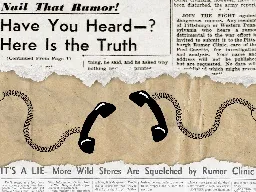
- Surrealism Is 100. The World’s Still Surreal.www.nytimes.com Surrealism Is 100. The World’s Still Surreal.
Exhibitions around the world are celebrating the art movement’s centennial and asking whether our crazy dreams can still set us free.
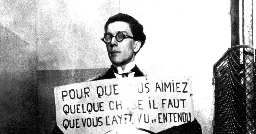
- The Real History Behind FX's 'Shogun'www.smithsonianmag.com The Real History Behind FX's 'Shogun'
A new adaptation offers a fresh take on James Clavell's 1975 novel, which fictionalizes the stories of English sailor William Adams, shogun Tokugawa Ieyasu and Japanese noblewoman Hosokawa Gracia




